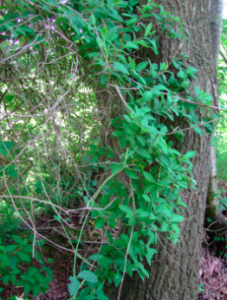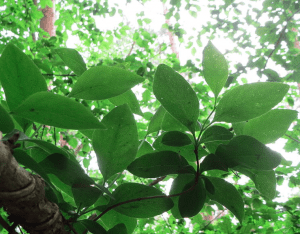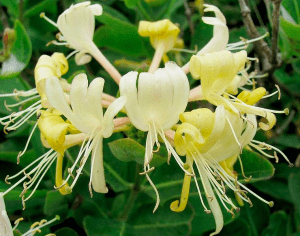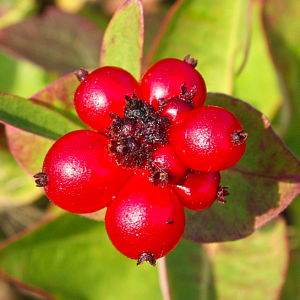Honeysuckle / Summer / Edible
Honeysuckle is one of those plants we’ve seen a thousand times in gardens and parks but did you know its’ edible, through this piece we’ll be taking a deep dive into identification and edibility.
Common Names
Honeysuckle, Common Honeysuckle, European Honeysuckle, Woodbine
Botanical Name
Lonicera periclymenum
Meaning of Botanical Name
The genus was named after Adam Lonitzer, (1528-1586), a German physician and botanist. This particular species name, periclymenum, refers to the way the plant climbs around things, such as fences, trees or other plants.
Scientific Classification
Kingdom, Plantae
Clade, Tracheophytes
Clade, Angiopserms
Clade, Eudicots
Clade, Asterids
Order, Dipsacales
Family,Caprifoliaceae
Genus, Lonicera
Species, L.pericylmenun
Known Hazards
There are approximately 180 species of Honeysuckle, some like our native Lonicera periclymenum are climbers and other species are bushes and they may be evergreen or semi-evergreen. It’s very important to make sure you do your research and positively identify the type of Honeysuckle you are looking at. The berries and leaves of most species are toxic with varying degrees of toxicity.
Toxicity varies depending on the species, ranging from non-poisonous to mildly toxic and if enough quantity is ingested, very toxic. Symptoms of poisoning can include vomiting, diarrhoea, sweats, dilated pupils, increased heartbeat, convulsions, respiratory failure and coma.
If you are looking for berries, I’d avoid this genus altogether until you really familiarise yourself with it.
Some sites suggest the leaves can be taken as a tea and others advise against it. You will need to do your own research.
Lonicera periclymenum is our only native species of Honeysuckle and the berries and leaves are toxic. The nectar and flowers, on the other hand are delicious.
Could be confused with
Perfolate Honeysuckle, (Lonicera caprifolium), is very similar to our native Honeysuckle, but the uppermost pairs of leaves, below the flowers, are fused around the stem and are almost cup shaped. The leaves of Lonicera periclymenum are opposite and while they may be stalked or sessile, they are not fused around the stem at any point.
Food Plant of..
Long tongued bees and many moths depend on the energy rich nectar of the flowers. Hummingbird Hawk moths can detect the scent of Honeysuckle up to a quarter of a mile away. Dormice eat the flowers and the red berry clusters are eaten by birds such as Thrushes, Bullfinches and Warblers.
Range and Distribution
Common throughout the British Isles, up to 610m.
Habitat
Woods, scrubland and hedgerows.
Physical Characteristics of Honeysuckle
Growing to 7 metres or more in height, vigorous, deciduous twinging climber, that occasionally keeps it’s old leaves over winter.

Leaves
Ovate, 30-70mm with smooth edges, sessile or shortly stalked and oppositely arranged.

Flowers
In terminal heads, the corollas are 40-50mm, cream, yellowish purple, deeply two lipped. The upper lip has four lobes and the lower lip is entire. The flowers are highly scented at night, to attract the moths they rely on for pollination. Less so during the day.

Fruit
Clusters of shiny red berries.

Folklore
The flowers of Honeysuckle were traditionally presented to each other to represent undying passion. The fragrance is said to induce dreams of love. If Honeysuckle is growing around the entrance to a house it will bring good luck to the inhabitants and deter evil spirits. If carried in to the house it was supposed to bring money in with it.
Conversely, Honeysuckle is also thought to be bring bad luck if brought inside the house, with possible repercussions including a sore throat, (possibly from the pollen), and the failure of the second hay crop!
On May day, garlands of Honeysuckle were hung in the cow sheds to protect them from being bewitched.
Edible Uses of Honeysuckle
The flowers can be used to make syrups, cordials, teas and jellies. Also used as a garnish for cocktails.
Herbal
Honeysuckle flowers have traditional uses as remedies for bacterial and viral infections. There are a number of studies looking at the benefits of Honeysuckle for treating respiratory illnesses like bronchitis and influenza. The flowers are high in antioxidants and anti-inflammatory compounds.
Miscellaneous
One use for Honeysuckle in Chinese medicine is as a contraceptive and although I’m not sure if our native Honeysuckle has the same action, perhaps if you’re trying to conceive, it may be best avoided.
Tips and Observations
There’s no need to remove the green parts of the flowers, the calyx or the ovary when cooking with them.







